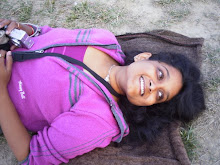Aim : Exploring the cycles of time and its influence on the movement of swaras and their respective expressions and bhavas hence created, that emerge in Hindustani music.
Objective : To understand what are the aspects that influence the time of a raga and how do they contribute to enhance the expression of the raga. Why is it sung at the time that it is sung and why not at some other time?
Method : The study is mainly divided into two parts. The first part being this paper and the second part is an audio recording demonstrating how the swaras change with the changing time of the day to evoke appropriate rasa. As the audio illustrates 10 ragas rendered with their aalaps and bandish, the paper deals with the theory of Raga- Kala chakra, Rasa theory and mainly the aspects that influence this time theory. There was an initial attempt to take short samples of music, and in the form of a questionnaire, taking down the experience of the people who heard it, to create a data base and conclude from the observations. But then I came across a paper by B. C. Dev who has conducted a similar study on a larger scale so I felt there was no point in re-inventing the wheel. I have mentioned about his experiment and results in the paper.
Scope : Focus here is only on understanding the Raga-Kala chakra in Hindustani music. Understanding why time is such an important factor, what aspects contribute to this time theory and how this theory implements itself through the ragas with the help of various swaras combinations, their specific lagaavat and appropriate laya, and how the lyrics play an important role in strengthening the whole structure, thus in the process, complimenting the theory of rasa.
Introduction:
The aim of this paper is to illustrate the concept of time in Hindustani classical music. Last semester, I talked about how the external environment affects the performer/ singer’s mental environment. This semester, I look at the same phenomenon form the other side. This time, I explore what are the tools that an artist uses to harmonize with the external environment, or to an extent, create an environment. More than time as an external application, it is the space/ ambience within which the artist tries to create that time. I feel that the space-time relationship in India is more psychological than logical.
The nature of time in India is cyclic. Time is not seen as absolute, but a relative phenomenon. There is a human body-clock, a planetary or nature’s time cycle and simultaneously a cosmic or universal time, all complete in themselves but all interconnected as a part of the larger whole.
In Hindustani music, one day is divided into two parts – from 12 noon to midnight and midnight to 12 noon, further divided into four prahars each. One prahar equals to three hours, each marking a significant shift in the natural environment as well as our inner bio-rhythms. In our music, specific ragas are sung in specific prahars as there are various swara combinations that identify with different moods of these prahars to express that. The purpose of music after all, is to harmonize our inner environment and feelings with the external nature and its heightened expression, trying to achieve that divine synthesis and oneness with the universe within and without us.
This paper, accompanied by the audio recording, shows how the swaras change with changing time of the day, thereby evoking the changing emotions and Rasa that corresponds to the external environment as well as the human bio-rhythms. We will try to grasp and feel the changing mood with each prahar. Symbolically, these prahars and ragas belonging to each of them can be represented in the form of a wheel dividing the day into 8 prahars and its important ragas. This is called the Raga-Kala Chakra. As per the Raga-Kala chakra, each prahar is demarcated largely by a particular set of notes, to create the larger mood and then these notes could make different internal combinations to create different shades and microtones within the same prahar.
In my audio recording, I have selected one prominent raga from each prahar, while two from the fourth prahars that contain the Sandhi-prakash as I feel that these ragas very distinctively mark the transition from light to dark and vice-versa, highlighting the co-existence of opposites. The ragas that define the transition of light at dawn and dusk are called sandhi-prakash ragas. In all 8 prahars, ragas of different thaats i.e. different important swara combinations are sung one after the other. Here it is important to note that these transitions from one prahar to another or one thaat to another are not abrupt but rather quite smooth. In between each prahar there are ragas that have the qualities of both the prahars and their respective thaats. These are called parmelpraveshak ragas. So in total, I have demonstrated 10 ragas representing all eight prahars and sandhiprakash, rendered with a short aalap that is characteristic of each raga to create the basic form of the raga and show the emotion or rasa related to it. But in order to make the illustration and the rasa evoked, more explicit and definite, the aalaps are followed by traditional bandishes to reinforce the form and emotion of the raga through the use of literature which also importantly contributes to create the intended bhava.
The paper mainly deals with the theory of Raga- Kala chakra and talks about the collective and intrinsic value of swaras, Rasa theory and mainly the aspects and factors that influence the time theory.

No comments:
Post a Comment